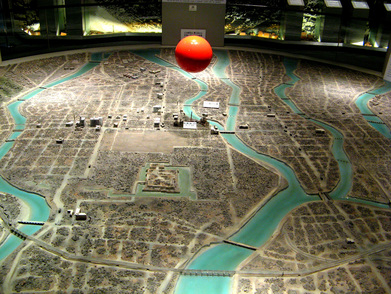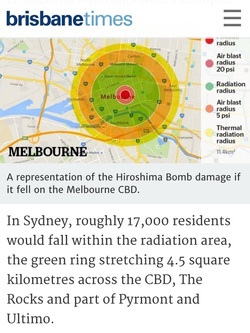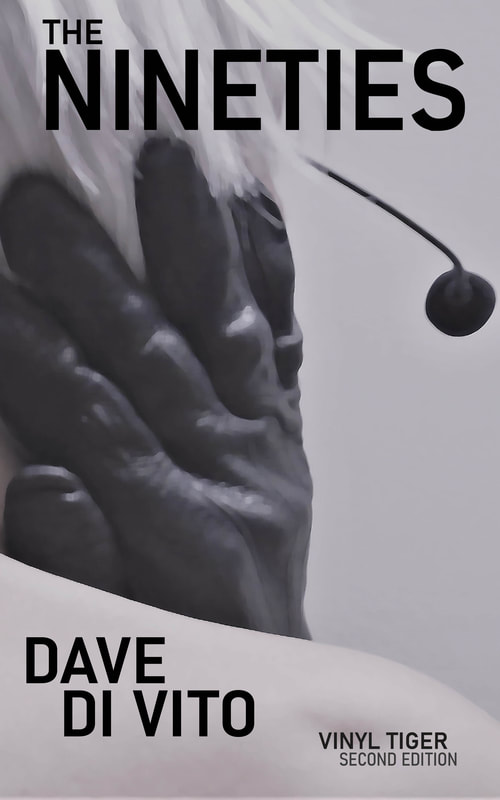 Source: Micha L. Rieser, wikimedia Source: Micha L. Rieser, wikimedia TODAY, August 6, 2015 marks the seventieth anniversary of the A bomb being dropped on Hiroshima. Later this week, we'll also be commemorating the anniversary of the bomb that was dropped on nearby Nagasaki a few days after the one in Hiroshima. What have we learned from those horrific events that have led to so many deaths? One could argue that it depends on where you are in the world, as beyond the global grief that we share for the hibakusha, it seems there are still alternative takes on the events. I''m on the side that thinks that these were two particularly despicable acts that annihilated hundreds of thousands of people to make a point. I'm also of the belief that we must never forget these terrible actions even as very few hibakusha (the Japanese name for those who were affected by the bomb blast) are still among us, and as such we need to find ways to keep the realities of those events alive and relevant to people. Hiroshima and Nagasaki are the only cities in the world onto which nuclear bombs have been dropped. No nuclear bombs had been deployed in war before or since those events, but as always they conveniently lay at the disposal of certain countries and super powers. A deterrence rather than an abhorrent threat that remains? By definition, the horrific events of 1945 have never been classified as war crimes, despite all the evidence (and logic) to the contrary. Mehdi Hasan wrote a really interesting piece a few years back which went back and forth on the war crime issue if you're interested. I find it odd that we are capable of collectively grieving, but incapable of really addressing the other issue at stake, and which I as a mere blogger won't do the disservice to by being flippant. But how is it that some countries are willing to continue to entertain the notion of nukes, even as, seventy years later, there are still people suffering as a result of their initial use?  Brisbanetimes screenshot 6/8/2015 Brisbanetimes screenshot 6/8/2015 How do we make sense of an atrocity that is so beyond the limits of our logic? Like everything else in the digital age we do it in both good and bad ways. The press coverage seems to be respectful and solemn for the main part. There are moving personal accounts and excerpts that recount the day's events and that get to the heart of the issue: the personal toll that dropping these bombs caused. Unfortunately if you look through google you'll also see the usual bottom/pond scum denominator in existence (conversely comparing Hiroshima's rebuild to Detroit's fall with a host of racist smatterings) as well as the perennial debate about Japan's changing stance on pacifism. In some of the Australian papers today, you'll see the usual personalization/localizing of the events for Australian audiences, where nuclear historian Alex Wellerstein's Nukemap is used to simulate the fallout in Australia's major capitals. Sigh. In the last few days I've been thinking about the most solemn of monuments to the events of August 6: The A-Bomb Memorial Park and Museum in Hiroshima. And I apologise in advance for personalizing, but I guess I'm Australian and it's in my nature to do so... I remember I once had a pretty offbeat graphics teacher when I was at art school. He was quite the character and had, let's say, a certain taste for the Orient. I remember he once sat me down over some photos he'd snapped in Kyoto. Mostly geisha and some streetscapes if I remember. I must've been about 18 or 19 at the time - and remember him telling me that I absolutely needed to travel to Japan, that I would fall in love with the place and that it would just be an unforgettable experience for me. I kind of laughed off his observations as those of a slightly eccentric teacher trying to make a connection with a student, but they came back to me years later when I first made my way over to Japan. I spent about a month there traveling from city to city, and he was right, I fell for it right there and then. I was lucky enough to meet a lot of people thanks to my lovely ex who knew dozens of people there and the love affair began. There were certain things that stayed with me: the food, the fashions, the mountains...the general aesthetic. That arty kook was right! - and eventually, I moved there. But one of the more indelible memories I have of Japan was made during my first visit there when I made my way to the A Bomb Memorial Park and Museum in Hiroshima. It's located pretty much at Ground Zero. Visiting places of incredible sadness and historical significance (like Auschwiz) always leaves its mark, but I recall that that museum was more than just a monument to the fallen: it was a really powerful call against the existence of nuclear weapons. There were so many artifacts on show: In my mind, I can still see the wrist watch that the bomb blast stopped in its tracks as well as all kinds of other personal belongings whose warped conditions were just too powerful to process properly or ignore.  I wasn't a kid when I visited, so I wasn't easily impressionable: quite the contrary if you know me. But I remember one display in the museum stayed with me more than any other. For a museum collection grounded so much in realia (there are thousands, possibly tens of thousands of objects collected from around the city on display, with more now being added to the collection) one of displays that seemed to put a truly human face to the events and the memorial was the series of post apocalyptic dioramas. Disheveled, sometimes deformed wax mannequins set up in arrangements that imagined what the days immediately after the bombing would've been like. They were macabre and disturbing, but despite their inauthenticity in that context, they offered some of the greatest visual insight into how reality after the bomb must have transpired. The mannequins I saw were 1990s re-dos of the originals that were at the museum. The museum is about to undergo its latest revamp, and its management board has decided to dispense with these displays in favour of making room for more objects that are going to enter into the collection and the museum space. It's a decision that has divided the public and whose results we won't know until 2018 when the revamp is unveiled. While it's true that we have a wealth of technology at our disposal to tastefully incorporate sound and vision into collections, I recall the space as being a mostly silent, hushed space that probably wouldn't be the right fit for a CGI display. And besides, many parts of the space house screens featuring actual documentary footage. The mannequins, to me at least, have taken on their own significance and authenticity. I don't know anybody that has visited who hasn't been affected by seeing them. Usually the effect is emotional, and I think that a museum of that kind has every right to tap into, and establish a tone for its visitors. I think the push for authenticity at any cost is not necessarily useful if it's not the most effective means of making your point. A silent, static display, despite its perceived outdatedness can still do all the right things for a museum visitor, and can still contribute to the ongoing heritage and preservation of not just artifacts, but an experience that is so larger than life that realia alone can not hope to capture in all of its intensity. In the meantime, lest we forget this, and the other completely low point in our collective histories. And of course a thought for all of those who were and remain affected by these horrible war crimes that occurred back in August 1945. A 2013 piece on the removal of the mannequins here. (http://ajw.asahi.com/article/behind_news/social_affairs/AJ201311090011)
0 Comments
Your comment will be posted after it is approved.
Leave a Reply. |
Dave
|
|
|
Dave Di Vito is a writer, teacher and former curator.He's also the author of the Vinyl Tiger series and Replace The Sky.
For information about upcoming writing projects subscribe to the mailing list. Dave hates SPAM so he won't trouble you with any of his own. He promises. |




 RSS Feed
RSS Feed